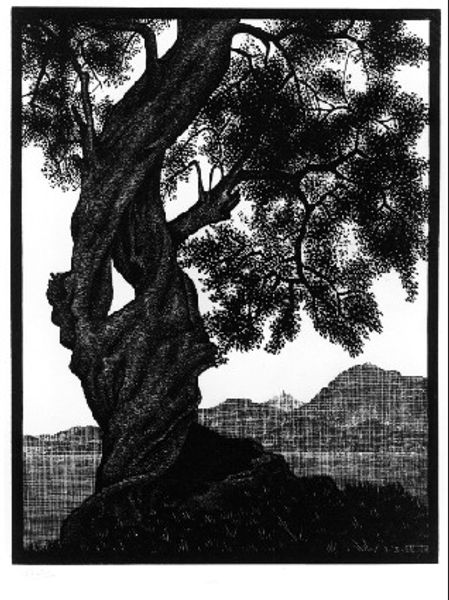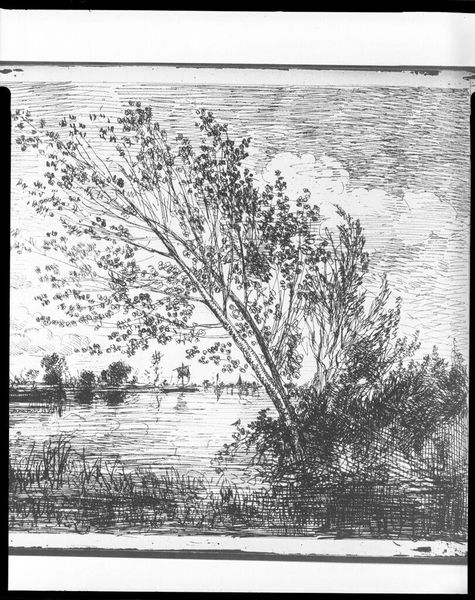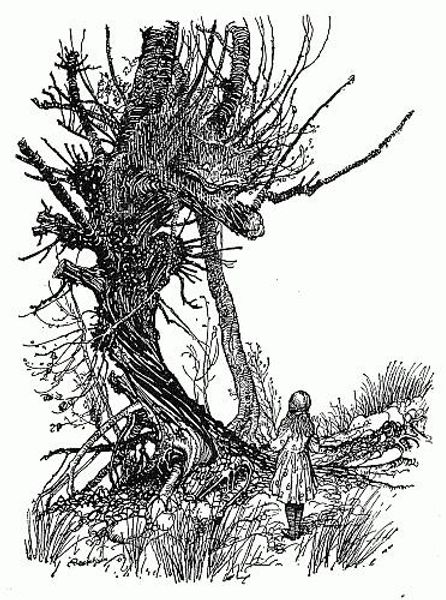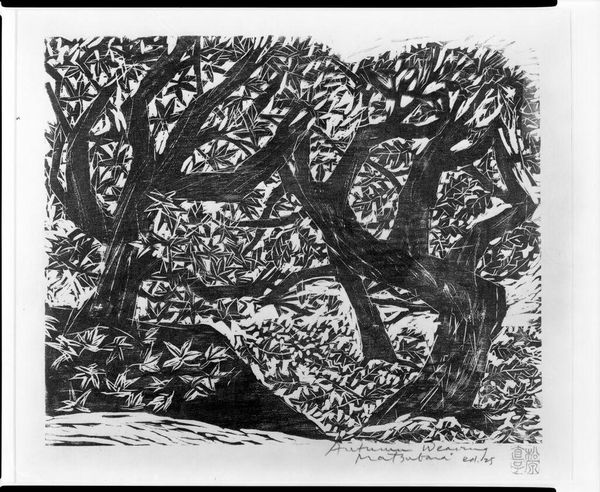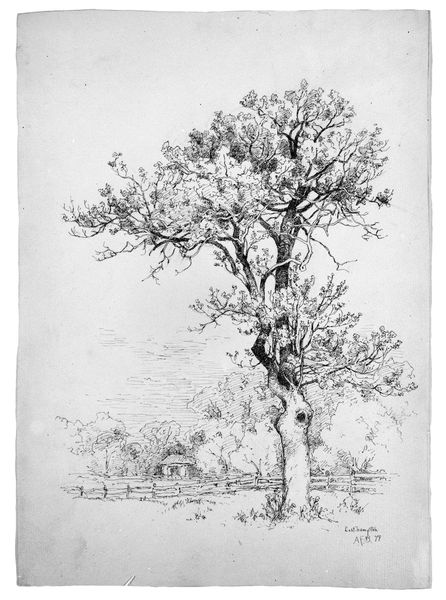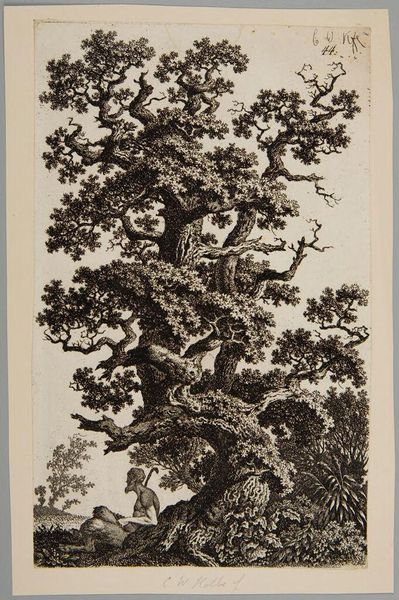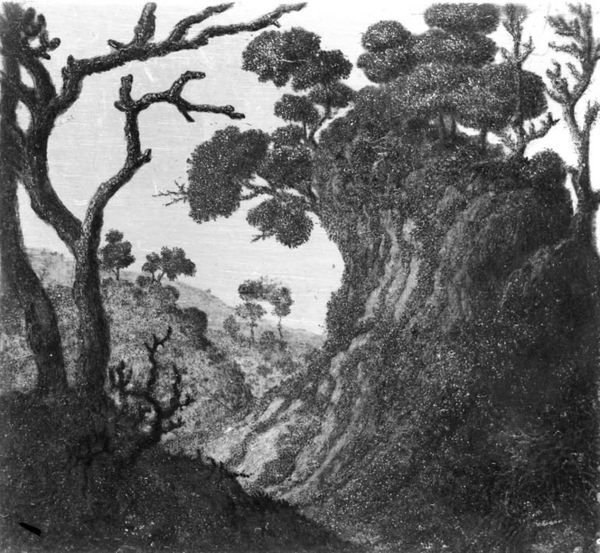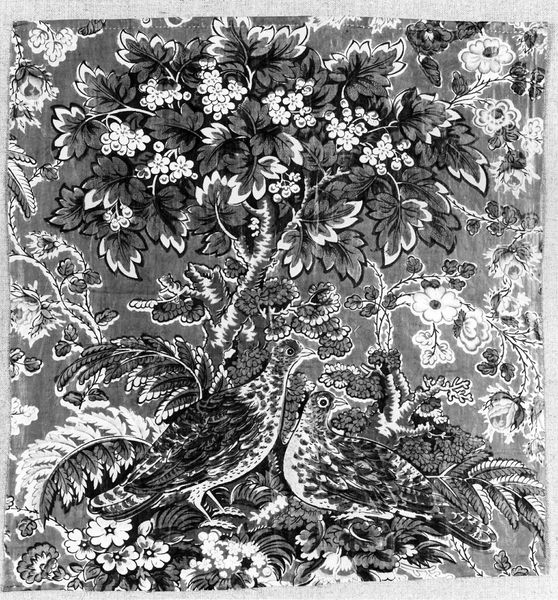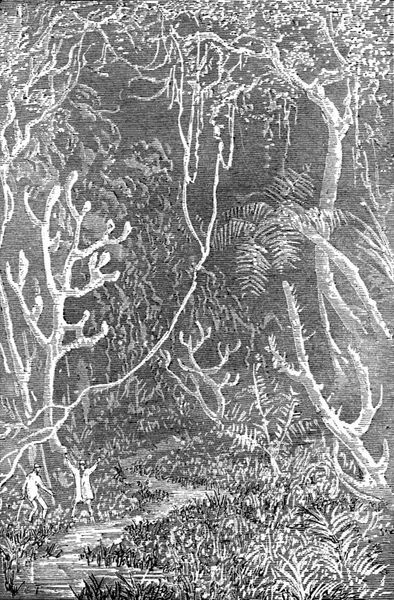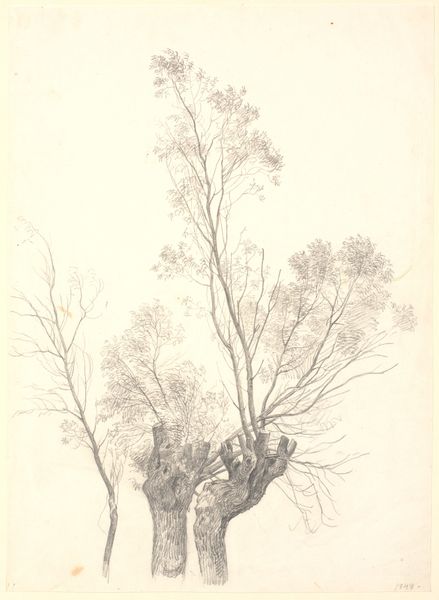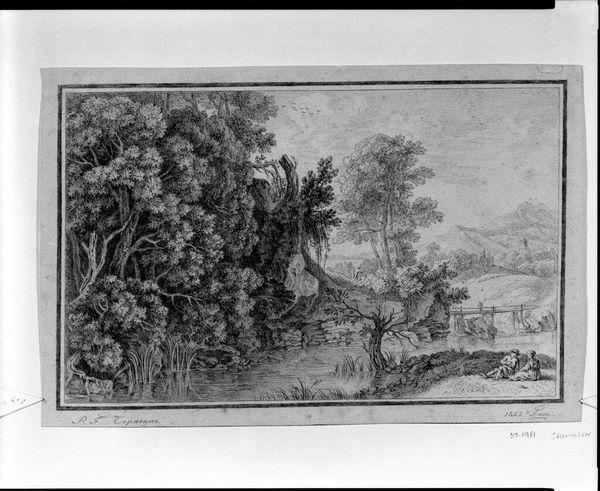
drawing, print, ink
#
drawing
# print
#
landscape
#
ink
#
geometric
Copyright: M.C. Escher,Fair Use
Editor: This is M.C. Escher's "Carubba Tree (February 1932)," a landscape print in ink from 1932. I find the high contrast really striking; the tree itself is incredibly detailed compared to the almost hazy background. What is your initial reaction? Curator: I observe the dominance of formal geometry as the foundational structure. The solid tree versus soft distant landscape presents a dichotomy between the clear and precise foreground with a progressive blurring, suggesting a semiotic game with near/far representations. Do you perceive this? Editor: I see the contrast you mean, almost like different styles mashed together. How does the geometry inform the whole, if that makes sense? Curator: Notice the geometric rendering of the rock, almost like crystalline facets. That exactitude spreads out to define the image—the contrast of dark versus light that organizes Escher’s whole composition and directs the viewer’s eye to specific points of high definition within a larger pattern of shapes and values. Editor: So it is less about representing a landscape, and more about arranging a balanced composition with contrasting details? Curator: Precisely. We are invited to analyze Escher's precise arrangements. The print asks the viewer to perceive the overall aesthetic effects achieved, while disregarding subject. Editor: That’s so interesting. I definitely came in with a representational bias and completely missed the formal composition. Curator: Indeed. The artwork can prompt such explorations into its very nature of production when considering a Formalist approach.
Comments
No comments
Be the first to comment and join the conversation on the ultimate creative platform.
